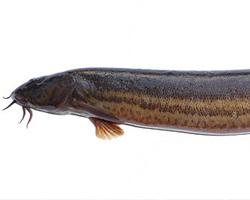
Stav ohrožení
| Ohrožen |
Popis zvířete
The Weatherfish, scientifically known as Misgurnus fossilis, is a fascinating species of freshwater fish belonging to the Cobitidae family. This intriguing creature is often found in the slow-moving waters of Europe and Asia, including rivers, streams, ponds, and ditches. The Weatherfish has garnered attention not only for its unique appearance but also for its ability to detect changes in atmospheric pressure, which has earned it the name "Weatherfish."One of the most distinctive features of the Weatherfish is its elongated, eel-like body, which can grow up to 30 centimeters in length. The body is cylindrical and slightly compressed, covered with small, embedded scales that give it a smooth texture. The coloration of the Weatherfish can vary but is typically a dark brown or black on the dorsal side, transitioning to a lighter yellow or cream on the ventral side. This color pattern provides excellent camouflage against the muddy bottoms of its natural habitat.
The head of the Weatherfish is small and slightly flattened, with a pointed snout that houses a terminal mouth equipped with small barbels. These barbels are sensory organs that help the fish locate food in murky waters. The eyes are small and may not be well-developed, as the Weatherfish relies heavily on its sense of touch and taste to navigate and forage.
One of the most remarkable adaptations of the Weatherfish is its ability to breathe atmospheric air. It possesses a modified intestinal tract that functions as a lung, allowing it to gulp air from the surface when oxygen levels in the water are low. This adaptation enables the Weatherfish to survive in environments with poor water quality, where other fish species might perish.
The Weatherfish is also known for its reproductive behavior. During the breeding season, which typically occurs in spring, males develop a distinctive breeding tubercles on their heads and pectoral fins. These tubercles are thought to play a role in stimulating the female during courtship. Females lay adhesive eggs among vegetation, where they remain hidden from predators until they hatch.
Diet-wise, the Weatherfish is an opportunistic feeder. It consumes a variety of prey, including insect larvae, small crustaceans, worms, and plant matter. Its nocturnal feeding habits and barbels aid in detecting food in the dark.
The name "Weatherfish" comes from the belief that this species becomes more active before a change in weather, particularly before a storm. It is thought that the fish responds to changes in barometric pressure, although the exact mechanism for this behavior is not fully understood.
Conservation of the Weatherfish has become a concern in recent years. Habitat destruction, pollution, and water drainage have led to a decline in its populations. As a result, it has been listed as a species of least concern by the IUCN, but with the note that its populations are decreasing.
In summary, the Weatherfish is a unique and adaptable species with a number of intriguing characteristics. Its ability to breathe air, sensitivity to atmospheric pressure, and specialized feeding habits make it an interesting subject for both scientific study and conservation efforts. As human impact on freshwater ecosystems continues to grow, understanding and protecting species like the Weatherfish becomes increasingly important.
Nové fotografie zvířat
Top 10 zvířat
- Chinese water dragon (Physignathus cocincinus)
- Galápagos tortoise (Geochelone nigra complex)
- Dolphin gull (Leucophaeus scoresbii)
- Japanese macaque (Macaca fuscata)
- Colombian red howler (Alouatta seniculus)
- Sea urchins (Echinoidea)
- Moustached guenon (Cercopithecus cephus)
- Diana monkey (Cercopithecus diana)
- Common reed warbler (Acrocephalus scirpaceus)
- Common house mosquito (Culex pipiens)